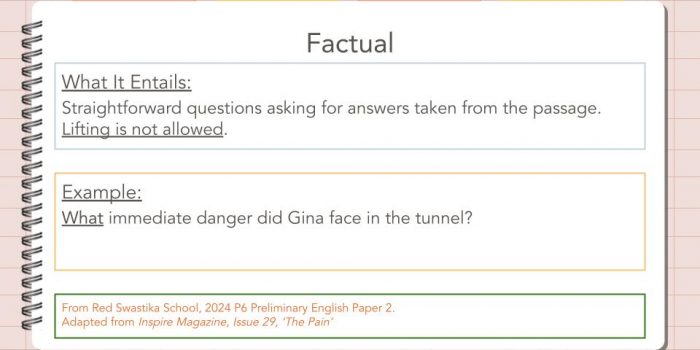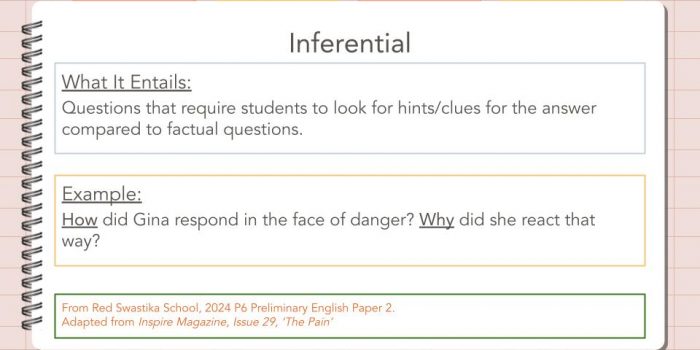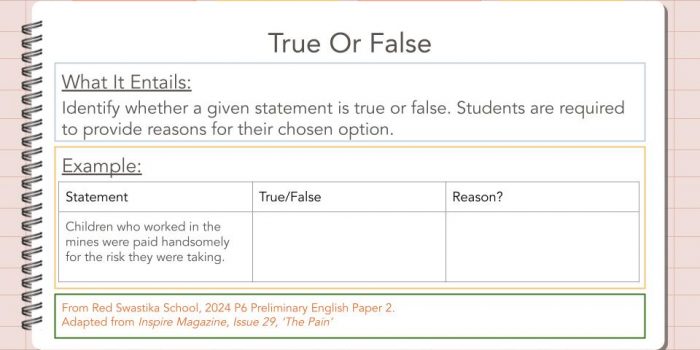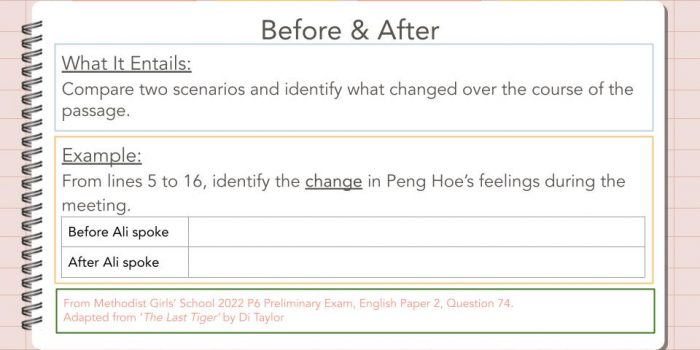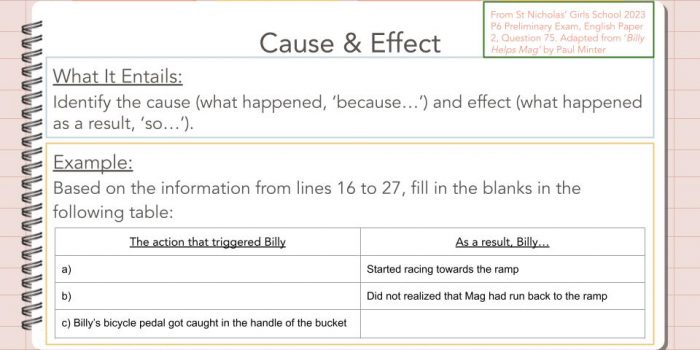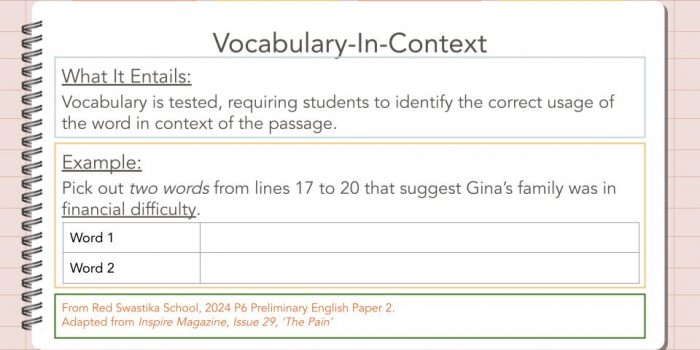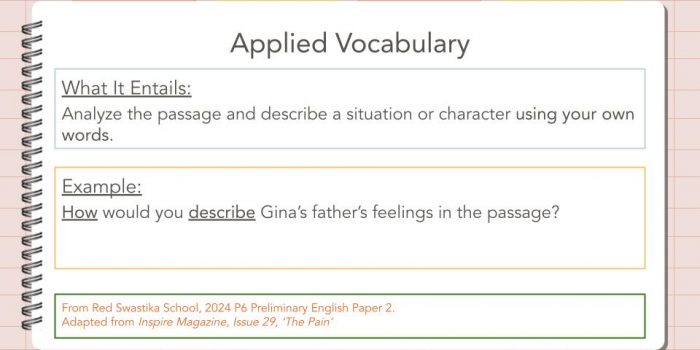- Feb 4, 2025 - 8 min read
Understanding PSLE English Comprehension Questions

Out of the four papers found in PSLE English, comprehension carries the biggest weightage at 45% as of 2025. As such, we believe it is essential for your child to understand passages and answer these questions without falling into the common pitfalls in this section.
To clear any doubts, we have created this handy guide to provide assurance to your child whenever they encounter Primary English comprehension questions. It’ll benefit students enrolled in our PSLE English tuition, as it reinforces key strategies taught by our qualified English tutors.

Read The Passage And Questions Several Times
Don’t understand the passage or questions after reading it once? Read it again. And again until you can fully comprehend it.
Reading the passage more than once helps your child have a better grasp of the passage in comprehension. If your child struggles with complex parts, rereading the same paragraphs helps.
While it might seem like it takes up more time compared to answering the questions immediately after reading the passage for the first time, it’s actually an effective time saving measure once your child understands the passage and is able to answer the questions more effectively—a skill that our PSLE tuition programmes help develop.

Write Down Notes At The Side Of The Passage
Need to figure out what a particular phrase or word means? Annotate, or write down notes at the side for your own clarification.
Let’s analyze this extract as an example (Red Swastika School, 2024 P6 Preliminary English Paper 2. Adapted from Inspire Magazine, Issue 29, ‘The Pain’):
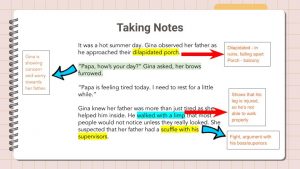
Taking notes enriches your child’s understanding of the text better and saves time in answering the questions later on. With these notes taken, let’s try to answer this question:
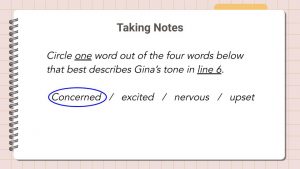
Straight away, you can tell that Gina is concerned about her father’s situation, and annotating the passage helps to answer the questions more effectively. Our English tutors emphasise annotation techniques in Primary English tuition to improve comprehension skills.

Understand The Types Of Comprehension Questions
These are the types of questions found in the comprehension paper:
Having a richer understanding of each question type clues your child into what the question is asking for. This is crucial in getting your child to provide the appropriate responses on the paper.

Provide Exact, Clear-Cut Answers
In comprehension, your child is tested in their capacity in understanding the given passage and what the question asks for. By giving exact, clear-cut answers, this means your child highly understands the passage and shows certainty in their responses to the questions.
When it comes to comprehension, our highly qualified MOE-trained tutors can help your child understand passages of varying complexities, further stretching your child. With our proper guidance, your child will be able to read passages as meticulously as possible and answer comprehension questions with confidence and clarity.

Check Spelling & Grammar At Least Twice
Now you’ve completed the paper, is there anything you have forgotten? Did you make sure that you spell all your words correctly? Were the right prepositions used in Booklet B, and used only once?
Take the remaining time to scan through your answers, making sure that you have used the right spelling and used appropriate grammar. Incorrect spelling and/or incorrect grammar can cost you marks if you’re not careful.

Only Lift When Appropriate
Lifting means copying a whole sentence word-for-word from a passage.
The only time your child is allowed to lift is for questions that explicitly ask the candidate to do so. Here are some examples:
- Which four-word phrase from the first paragraph reflects Gina’s dangerous situation?
- Which sentence from the last paragraph shows Gina casting her uncertainties aside?
For most other questions, you are required to paraphrase. Paraphrasing means using a combination of your own words and words from the passage to answer the question.
Here’s an example of paraphrasing in answers:
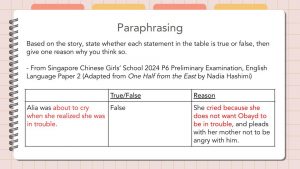
As you can see in the above example, some of the words in the answer (under ‘Reason’) are the same as the ones found in the given sentence, but rearranged and changed slightly for the sake of brevity and clarity.
Conclusion
Following these tips will help your child better understand Primary English comprehension questions. As long as they read the passage and question repeatedly and carefully, they will understand which type of question you’re answering so that their responses tally.
At Edufirst, we offer Primary English tuition covering a broad range of topics, from creative writing to grammar and comprehension. Our team of experienced tutors will ensure that your child is familiar with MOE’s Primary English syllabus, preparing them in all areas by the time they reach Primary 6. They will be ready to handle PSLE English with ease by then.
Best of all, we’ll give your child the attention they need by providing individualized coaching targeting any weak points they might face. Drop us a call or a message if you are interested to learn more, and we’ll get in touch with you shortly!
Still on the fence? Register and arrange a trial session with us now!
